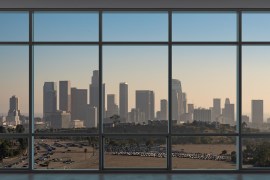With Millennials making up the largest share of the U.S. labor force, we’ve been closely monitoring their various preferences – from work/life balance to migration patterns across the nation’s major metro areas.
As a follow-up to a pre-pandemic version of this study, we updated our ranking of the top 10 most attractive metropolitan statistical areas (MSAs) for Millennials across the U.S. Specifically, in the span of just two years, the list has witnessed a series of noteworthy shifts — from the impressive rise of San Jose, Calif., to significant drops for Raleigh, N.C., and Denver — along with new metro areas joining the list.
To gauge each entry’s performance, we scored them across these seven metrics:
- Millennial population growth between 2016 and 2020
- Proportion of Millennials in the overall population in 2020
- Regional price parity
- Median Millennial household earnings
- Unemployment rate
- Percentage of Millennials with employer-based health insurance
- Percentage of Millennials in the labor force with a bachelor’s degree
The map below highlights the top 10 metro areas for Millennials, according to this study.
San Jose Tops List for Median Earnings, Health Coverage & Educational Attainment for Millennials
The San Jose, Calif., metro stood out not just by garnering the highest score, but also by ranking first across three of the seven metrics. For Millennials on the lookout for an upgrade in their financial status, the most notable of these was San Jose’s number one position in terms of median earnings for Millennial households — outranking the likes of San Francisco, Boston and Seattle.
Naturally, San Jose also performed well for the high percentage of its residents’ who boasted a higher education diploma: Roughly 61% of San Jose Millennials had a bachelor’s degree or higher, closely followed by Boston (60%) and San Francisco (58.9%).
The California metro also had great health insurance coverage levels for Millennials, heading the list with 77%.
All of these performances contributed to a spectacular rise in the rankings for San Jose when compared to its previous showing: The California metro area rose from the bottom of the list (10th place) to the top spot, totaling 77.8 out of 100 points.
Austin Boasts Largest Share of Millennials Among Top 10 Metros
The latest data from the U.S. Census Bureau showed that 17.4% of Austinites belonged to the Millennial age group, landing the Texas metro area in the top spot in terms of its share of Millennials within its total population.
Next, Austin earned third place for its 12.8% increase in its Millennial population. More precisely, U.S. Census data revealed that, between 2016 and 2020, the number of Millennials rose from roughly 336,000 to 379,000. All in all, that meant that an additional 43,000 new residents within that age group chose to live and work in the Texas metro area.
Austin also came in fourth for unemployment (2.7%), just behind San Jose, Calif.; Nashville, Tenn.; and Salt Lake City.
Seattle’s Millennial Population Increases by Nearly 14%
The Seattle metro area headed the list for the largest change in the overall Millennial population indicator. Between 2016 and 2020, the percentage of Seattle Millennial residents increased by 13.7% to bring the total for that age group to roughly 668,000.
Notably, the Washington metro area also recorded the second-highest share of Millennials within the overall population in our ranking (17%) and took fourth place for its median Millennial household income of $101,000.
For more highlights, along with details regarding our methodology, read the full article by visiting CommercialCafe.com.







